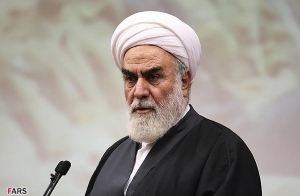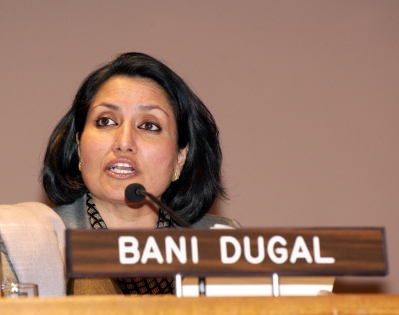December 12, 2014

Men and women in Iran are believed living together outside marriage in increasing numbers, which the regime sees as a decline in moral values but also as a challenge to the regime itself.
Cohabitation was unheard of not so long ago. When it did happen, society averted its glance and pretended it didn’t exist. But now that cohabitation is viewed as common, it even has a name in Persian—white marriage. And officialdom is now acknowledging cohabitation—with anger.
Just a week ago, Moham-mad Mohammadi-Golpayegani, the chief of staff for Iranian Supreme Leader Ayatollah Ali Khamenehi, criticized cohabi-tating couples as “shameful” and warned that their entire generation “will be extinguished and they will become bastards.”
Golpayegani is one of the least known senior officials in Iran, but also one of the regime’s most powerful figures by virtue of the fact that he has been seated for decades at the right hand of the Supreme Leader. Golpay-egani declared that “the Islamic ruler should strongly fight this kind of life,” hinting that the regime was about to launch a crackdown.
Officials see such couples as an affront to the Islamic values that are preached and enforced by the state through pressure and harassment. But the affront is not just moral. Cohabitation is seen as a copying of despicable Western values and therefore as a challenge to the nezam (system) of the Islamic Republic. Cohabitation is thus a political as well as a moral challenge.
Deputy Youth Minister Mahmud Golzar allowed that some young Iranians might be cohabitating, but he told the Fars news agency last week that the numbers are not known and the media may be exaggerating the problem.
If a large volume of white marriages were to be confirmed, he warned, the Islamic Republic would confront such an “ominous” development, which he said has had a “very negative effect” on Western societies.
As Golzar said, there are no reliable figures on the number of cohabitating couples. Street conversations, official comments and media reports all suggest a recent and rapid surge in cohabitation in urban areas. But in Iran, accepted wisdom is often contrary to reality. What is a certainty is that many within the regime believe cohabitation is growing rapidly and must be stopped.
Radio Farda recently interviewed a number of cohabiting couples.
Thirty-three-year-old Ali, an engineer, said he lived with a girlfriend for several months before they broke up last year. “We didn’t want to get married, but we wanted to be together, so she moved in,” he said. They cohabitated despite their parents’ disapproval.
Ali told Radio Farda some of his friends and acquaintances had also chosen the unmarried route. “We basically want to live our lives the way we want,” Ali said. “Now you can call it a white marriage or whatever you want.”
He said he was aware of the risk he was taking, noting that “everything is risky and illegal in Iran—even partying.”
A Tehran-based observer told Radio Farda the perceived rise in unmarried couples should be seen in the context of a new generation of Iranians who are turning their backs on tradition and state-promoted values—precisely what infuriates the governing elite.
“Attitudes are changing, a number of young people don’t care about what other people might think or how the state might react, they are becoming increasingly independent,” he told Radio Farda.
A desire to be free from the responsibilities and financial burden that come with weddings and married life may contribute to the perceived trend.
Mostafa Eghlima, the head of Iran’s Society of Social Workers, told the daily Ebtekar, “Girls and boys [in white marriages] can easily end their relationship without any problem and without any expectation.”
Javid Samoudi, a psychologist based in Qom blames cohabitation on the much railed against “cultural invasion” as well as fading religious beliefs, weakening family ties, rising economic costs, and a desire for diversity and no commitment among young people.
In an interview with the Iranian Students News Agency (ISNA), he likened white marriages to “a microbe that pollutes men’s views and damages the character and personality of women.”
Sociologist Majid Abhari was quoted by Iranian media as saying that the “growing influence” of the Internet and satellite channels was behind white marriages.
Last week, presidential adviser Hessameddin Ashna argued that if getting married were easy and affordable, fewer Iranians would choose cohabitation. He appeared to be suggesting a resumption and expansion of policies adopted under President Ahmadi-nejad to give financial aid to newlyweds to help them find a home and furnish it.
The spread of cohabitation comes amid another headache for Iranian authorities: a soaring divorce rate. In the United States divorce peeked in the 1990s and has been declining ever since. One reason for that decline, many analysts theorize, is the growth of cohabitation. Cohabitating couples are engaged in a trial marriage, they reason, and part ways without a divorce if they find they aren’t meant for each other.
























